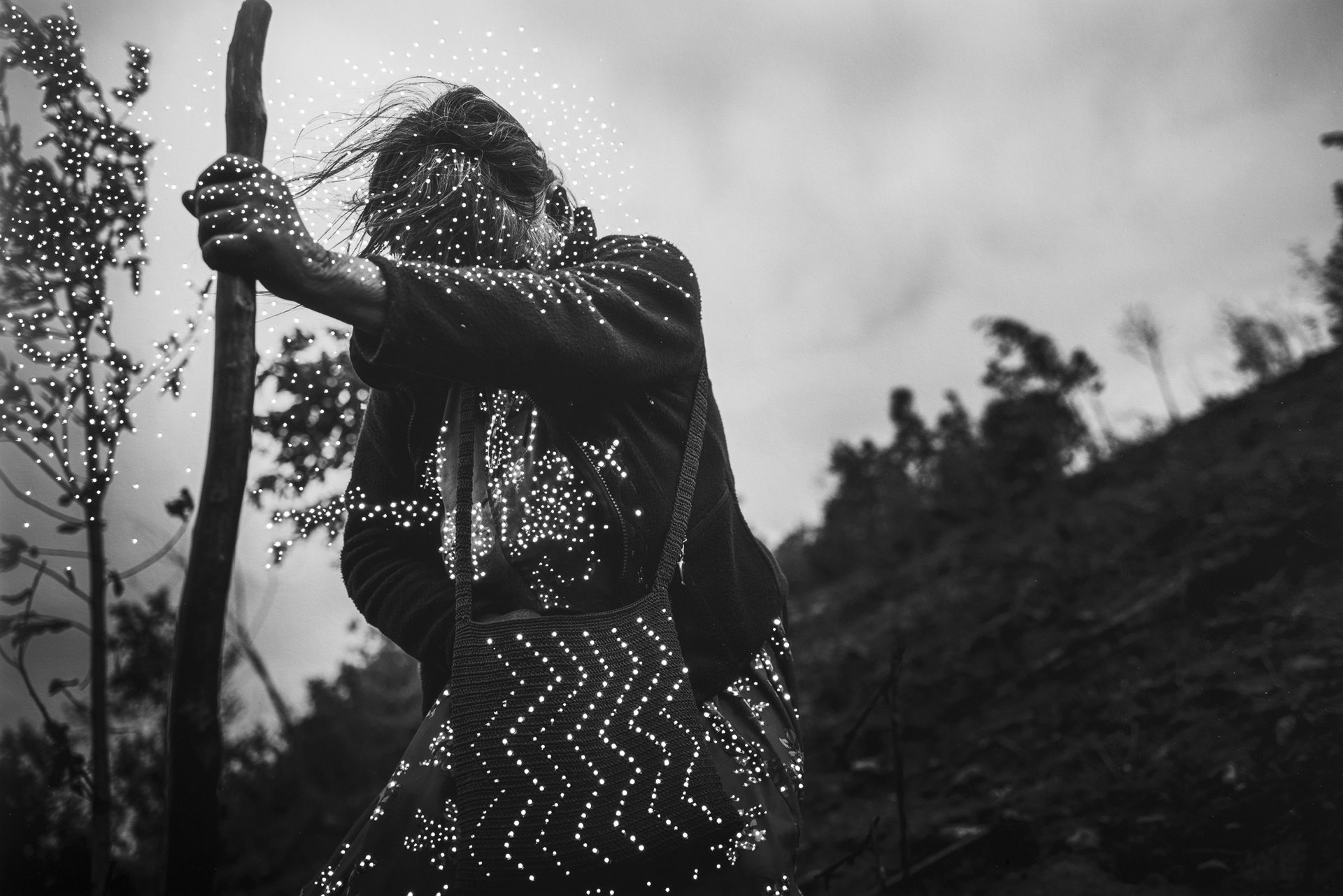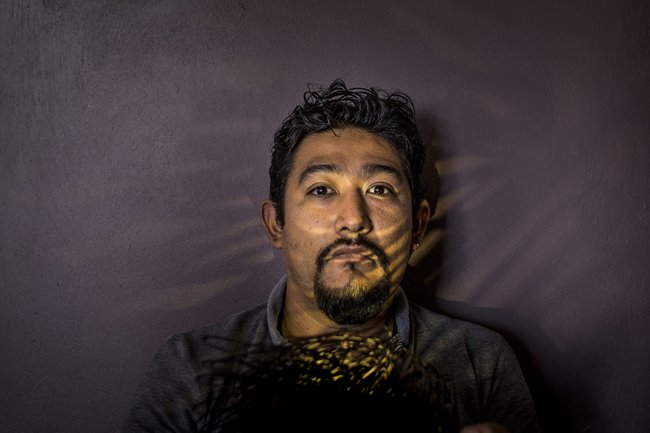Felipa Garcia Reyes plants maize and beans with her family in Huehuetepec, Guerrero, Mexico.
Many Indigenous families depend on their crops of maize, beans and squash for food. The government of Mexico has implemented support programs for rural communities. However, much of the corn imported into Mexico from the US is modified, and many families do not use it as the maize is not natural and organic.People in Mexico first cultivated maize 10,000 years ago from the teosinte (Zea nicaraguensis) plant, and 64 different varieties now exist. The president of Mexico, Andrés Manuel López Obrador, pledged to phase out genetically modified (GM) corn by 2024 during his inaugural speech in 2018. A nationwide campaign launched by small farmers, Indigenous communities and civil society groups in 2007 is working to protect Mexico’s native heirloom corn varieties from GM contamination.
The project is a series of textured photographs that document the struggle that Indigenous poppy cultivators face in Guerrero, Mexico. The photographer put scratches and pinpricks into prints of the photographs, and then backlit them, to represent trauma as well as the process of scratching of the poppy flower during opium extraction. The color red is used to signify life, blood and violence.
Mexico is the third-largest opium producer in the world after Afghanistan and Myanmar. Over half of Mexico’s opium is grown in its second-poorest state, Guerrero, which is home to several Indigenous ethnic communities. Neoliberal economic policies have been damaging traditional agriculture since the 1990s. This has led to small-scale farmers no longer being able to compete with foreign exporters, forcing them to abandon traditional crops, such as maize and coffee, for more lucrative crops such as opium poppies and marijuana. The drug economy constitutes a substantial portion of the local economy, and has transformed the social structure of these often Indigenous farming communities.
Areas of drug cultivation are controlled by drug trafficking organizations (DTOs) who essentially govern the social and economic aspects of life in the area. These areas experience conflict and violence due to the clash between DTOs, anti-crime militias and organized crime groups. However, poppy eradication campaigns, led by the military and law enforcement agencies, have actually encouraged relationships between low-income poppy farmers and DTOs. Drug-related violence continues to overwhelm the state, with Guerrero reporting some of the highest rates of forced displacement and unreported and uninvestigated crimes in Mexico. Farmers find themselves trapped between the violence of criminal organizations and policies that consider them criminals while offering few viable alternatives.

